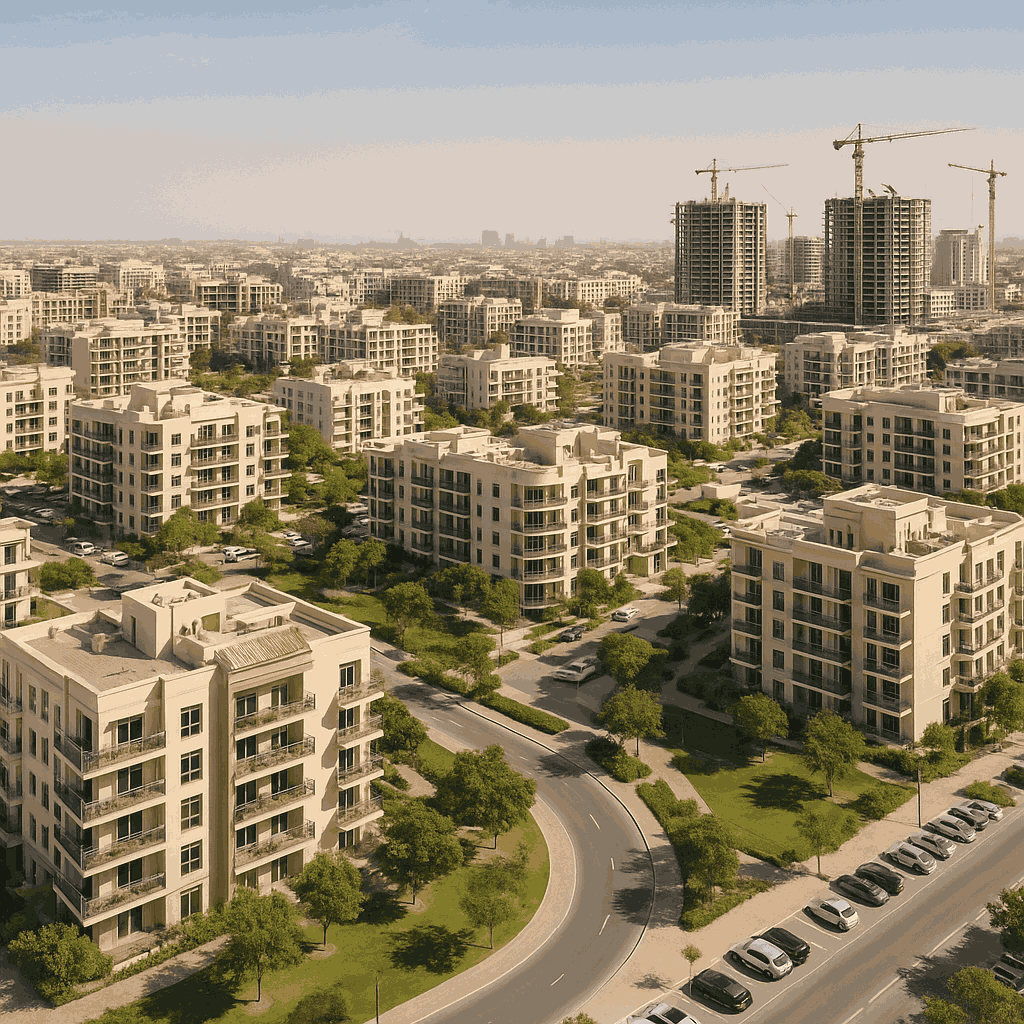
Key Takeaways:
-
Dubai’s residential property prices rose 20.5% year-on-year in Q2 2025, with affordability-driven demand fueling much of the growth.
-
Areas like JVC, Dubai South, and Arjan saw the highest quarterly price jumps, while Palm Jumeirah and Downtown slowed slightly.
-
Supply constraints, rising rents, and continued foreign investor interest are driving prices upward.
-
Analysts expect moderate cooling in late 2025 as new units come online.
Affordability Now Leading Dubai’s Property Boom
The latest data from DXB Interact and top consultancies confirms that Dubai’s property market remains on an upward trajectory, with average prices rising 20.5% year-on-year in Q2 2025. However, the story behind this surge is shifting: it’s no longer just luxury buyers driving growth — mid-income communities are now leading the charge.
In contrast to 2022–2024, when branded residences and waterfront penthouses dominated headlines, current demand is increasingly concentrated in value-for-money neighborhoods offering livable space, infrastructure, and price accessibility.
Top-Performing Areas in Q2 2025
According to recent market trackers, here are the communities showing the strongest appreciation this quarter:
| Area |
YoY Price Growth |
Key Drivers |
| Jumeirah Village Circle (JVC) |
+26.3% |
Investor-friendly pricing, high rental yields |
| Dubai South |
+24.8% |
Expo legacy, airport proximity, affordable units |
| Arjan |
+23.6% |
Growing family appeal, new schools and parks |
| Business Bay |
+18.2% |
Spillover from Downtown, strong short-let demand |
| Mirdif |
+17.0% |
Uptake in freehold townhouses and villas |
Meanwhile, Palm Jumeirah (+7.9%) and Downtown Dubai (+6.2%) showed signs of stabilizing after a multi-year rally, as ultra-prime inventory nears price ceilings.
What’s Driving the Surge?
Several factors are converging to push prices upward:
-
Rising rents: With rents up nearly 22% YoY, many tenants are converting to ownership, especially in mid-market segments.
-
Investor demand: Strong ROI in areas like JVC (6–8% net yields) attracts both local and international buyers.
-
Limited new supply: Despite record launches in 2023–24, most new inventory will complete only in late 2025 or 2026.
-
Population growth: Dubai’s population crossed 3.75 million in Q2 2025, driving continued demand for housing.
-
Favorable lending: Interest rates remain stable, and loan-to-value ratios support first-time buyers.
Outlook: Cooling Likely, But No Crash Expected
Analysts from CBRE and Asteco forecast that while price momentum will continue in Q3, the pace will likely slow in Q4 2025 as more supply is handed over, especially in communities like Dubai Hills, Tilal Al Ghaf, and Town Square.
Still, the fundamentals remain strong:
-
Dubai remains a global investor magnet
-
Visa-linked real estate policies (like Golden Visa at AED 2M) are driving long-term ownership
-
Infrastructure projects (Blue Line Metro, road expansions) support suburban area growth
In short, while a return to double-digit growth every quarter is unlikely, a soft landing rather than a correction appears most probable.
Stay informed on the latest news and insights across Dubai —
Subscribe to our newsletter and explore more at fäm Properties.